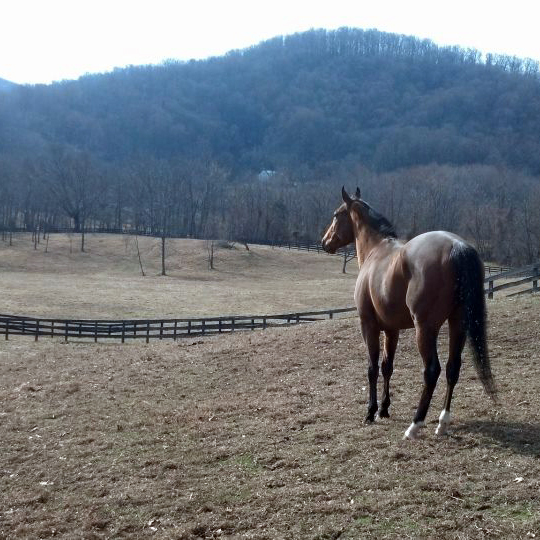There’s nothing quite like the smell of diesel, dirt and manure mingled with damp early morning air. Well, nothing except a horse show.
As I walked my first course of the day, I glanced around the Reel Arena and thought, “This is awesome.” And no, I wasn’t walking my first grand prix; in fact, I was walking a friendly .80-meter jumper course, little sticks for me. What made this day awesome wasn’t the height of the fences but the enthusiasm of the competitors, both human and equine. As a life-long Thoroughbred owner and rider I have always believed in the breed and done my best to showcase just how capable these horses are. The folks filling the arena with me didn’t need convincing; they too love a Thoroughbred. It’s an exciting thing to be surrounded by so many others that are invested in retraining off-the-track Thoroughbreds—it’s an exciting thing to be at the Thoroughbred Celebration Horse Show in Lexington, Va.
The first line of the job description for my position as a rider/trainer at Tebogo Sport Horses in Delaplane, Va., was “must love a Thoroughbred.”
I’ve come to learn over the past two years at Tebogo that loving a Thoroughbred goes far beyond cookies and schnoodling (our made-up word for cuddling/snuggling). Loving a Thoroughbred = training a Thoroughbred. I train them because I want them to be able to earn a living on their own, to transition them from burden to beloved.
As a rule, Thoroughbreds were bred to work, to be athletes, and to have heart and stamina. At Tebogo we cultivate those inherent traits into a career. We do that by waking up every morning and pulling our breeches on one leg at a time and going to work, diligently sticking to a program with patience, discipline and above all consistency. Every horse is different, and their progress cannot be measured by the height of the fences or the show ribbons they receive. To me, their ultimate success is indicated by their ability to go on to their next owner as useful, willing participants in their chosen career.
The journey from starting gate to show ring has lots of speed bumps along the way. Many horses go through a sort of physical crash post-racing. They’re
ADVERTISEMENT
 |
| Turn-out time is an essential ingredient in the recipe for retraining an off-the-track Thoroughbred. Photo by Patricia Vos. |
experiencing many major lifestyle changes, from zero turn-out to lots of turn-out, from elephant-sized portions of rocket fuel high protein feeds to normal portions of grain, from rigorous daily workouts to down time, and—in some cases—the shift from a life on steroids and anti-inflammatories to no drugs.
Whenever you get a race-fit horse fresh off the track it’s important to remember just how much their world is changing. It’s the equivalent to you being told, “Here, go teach Mandarin to this group of electric eels while living on the moon.” For that reason, no matter how quiet and amiable a race-fit horse we get is, at Tebogo we insist that they have a minimum of two weeks off before they go into full training, and many of them require much more time than that.
Let-down time is essential for them, and it’s essential for me. A race-fit 3-year-old has a lot more stamina than I do, so if he doesn’t want to do things my way, why should he? In all things with horses, I’ll never be stronger than they are, but I can be smarter. Let him cool off and learn how to be a horse again before you begin the retraining process.
They let you know when they’re ready; it’s a certain softness that their eye takes, a certain change in posture that says they’re ready to do something new. After about two weeks into this down time, you might start to see the crash (if they’re going to do it, not all of them do)—don’t panic, don’t overfeed, don’t worry too much. They lose a lot of that pumped-up over muscling (which is in all the wrong places) and can start to look rough around the edges. And by rough around the edges I mean, poor coat condition, loss of topline muscling, weight loss, dull demeanor, skin problems (holy rain rot batman!) and so on. Talk to your vet about an appropriate feed ration, pull some blood if you’re worried about anemia and above all, let them be a horse. You can’t begin to train them like a horse if they haven’t learned how to be a one.
Hunter/jumper trainer Paige Cade works at Tebogo Sport Horses, a facility in Delaplane, Va., devoted to the re-training and sales of off-the-track Thoroughbreds.















